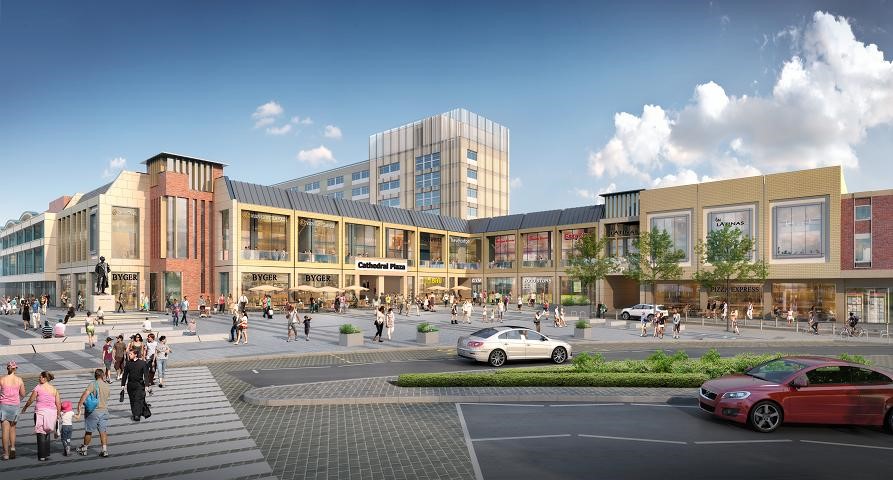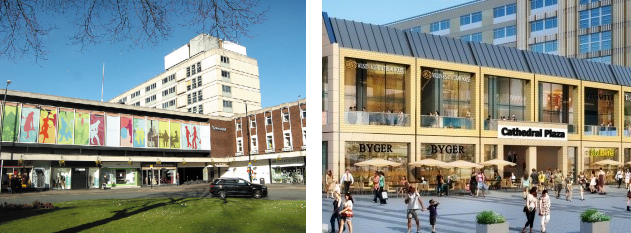Salmon Harvester Opportunity Fund has submitted a detailed planning application to Worcester City Council for the redevelopment of its 220,000 sq ft Cathedral Plaza shopping centre in the cathedral city based on building and topographical survey data provided by Met Geo Environmental.
Plans had been approved in 2008 to create a ‘food quarter’ at the former Lychgate Shopping Centre, but the recession brought the project to a halt a year later. Following the sale of Cathedral Plaza to leading commercial property developers, Salmon Harvester Opportunity Fund for £24milllion in 2013, a new scheme was drawn up.
The survey update was required from Met, who undertook original survey work in 2000, because of the re-configuring of the centre that had taken place prior to 2013.
The multi-million proposals are for the creation of seven new restaurants overlooking a new public square in front of the famous cathedral along with remodelled shop units, a gym and foodstore.
The company aims to regenerate the existing retail space in a bid to attract quality restaurants and retail businesses, including national names to the city.
Nick Webb of Salmon Harvester Opportunity Fund says; “Our plans are aimed at attracting good quality restaurant and retail businesses to Worcester and increasing shopper dwell time in the city centre to the benefit of all concerned.
“Our proposals for Cathedral Plaza present a fantastic opportunity to regenerate a currently unloved part of the city to provide a new leisure offer and introduce a major new public space in front of the Cathedral.
“We’re working closely with the council and other stakeholders to ensure we can create the best scheme possible for the City.”
Subject to planning consent, the project would get underway early next year with the new restaurants and shops open for Spring 2016.





